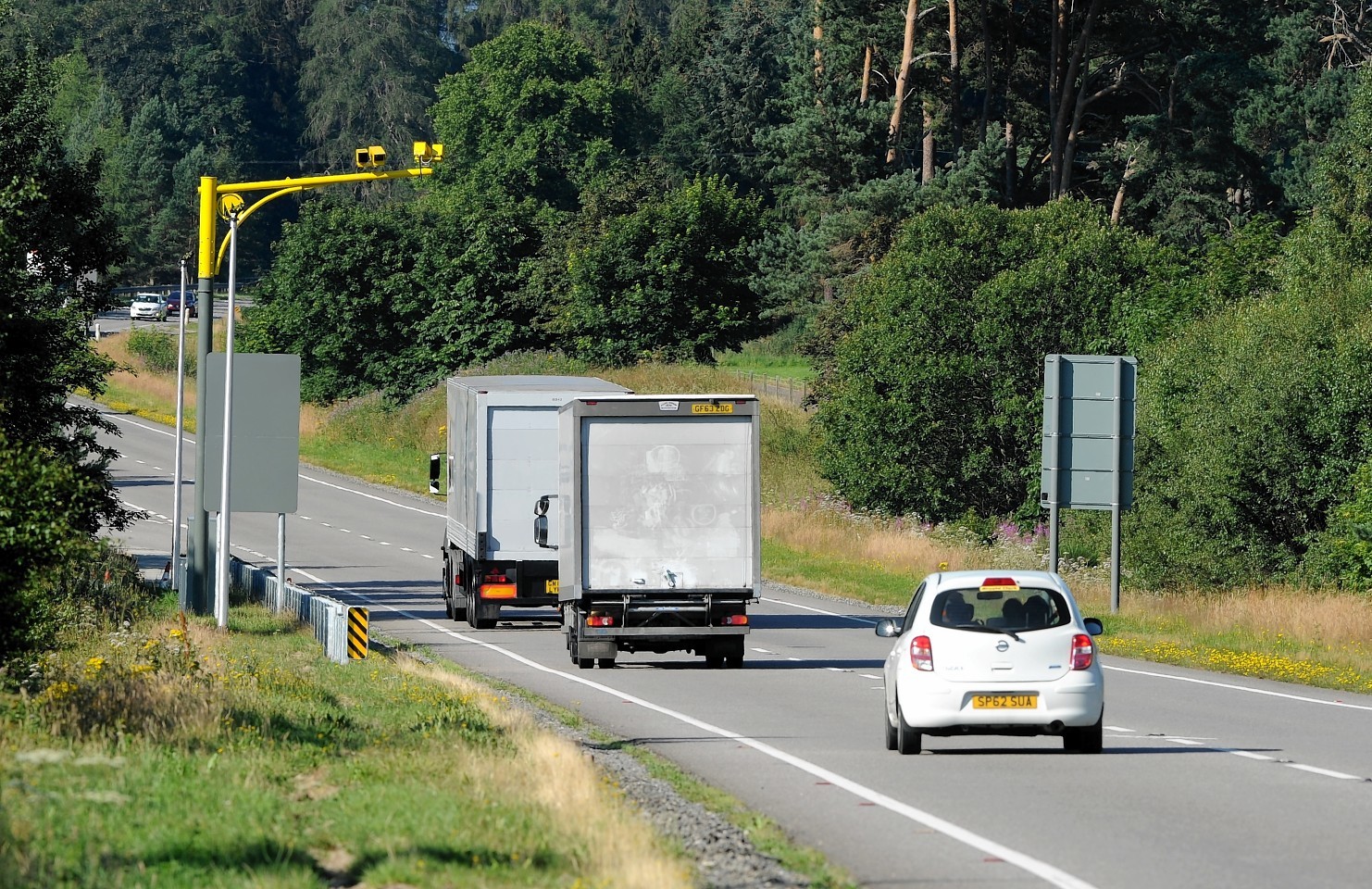Transport Minister Derek Mackay has said he is open to the idea of average speed cameras being installed on other key routes following the success of the A9 scheme.
He claimed the £2.5million system, which has been monitoring traffic on the Inverness to Perth route since late October, had won public support.
Figures have showed that speeding on the A9 – which has an increased speed limit for HGVs on the camera control section – is down from one-in-three drivers, to one-in-20.
Mr Mackay said potential new camera routes would be decided on a case-by-case basis.
Possible candidates for the installation of so-called yellow vultures – which measure speed over set distances – could be the A96 Aberdeen to Inverness road.
Neil Greig of the Institute of Advanced Motorists, said there were many routes that might benefit from the devices and Labour infrastructure spokeswoman Mary Fee said the system had clear safety benefits.
But campaigner Mike Burns claimed instaling cameras was a way of “delaying” proper road upgrade investment – a view shared by Highland MP Danny Alexander when it comes to the A9.
A Scottish Government spokeswoman said: “As reported last month, the early findings on speed, journey time and journey time reliability show the A9 cameras are having a positive influence on driver behaviour as well as public opinion about their use.
“Judgements on the removal of average speed cameras will be made as circumstances require, as will the merits of using average speed cameras in other parts of the country.”
Mr Burns, of Foy, who leads the A9 Average Speed Cameras are not the answer campaign group, said it was “no real surprise” that the government was now considering installing devices on other roads.
“The A9 experiment is set to find a way to delay promised investments in the roads Scotland desperately needs,” he added.
Mr Burns said the UK Government was overseeing the roll out of an increased speed limit for HGVs on single carriageway roads but claimed no additional speed cameras were being instaled.

